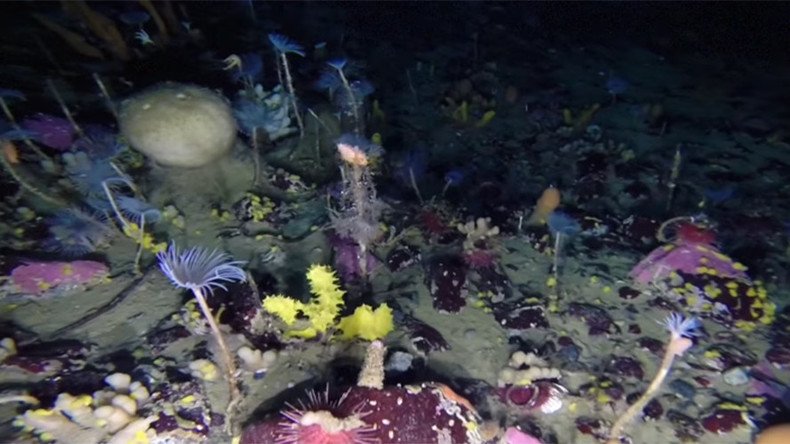Antarctica in technicolor: Mesmerizing footage of wildlife below sea ice revealed (VIDEO)

Rarely-seen footage of the world beneath Antarctica's thick ice has been captured thanks to a group of scientists and their robot.
The Australian Antarctic Division (AAD) was retrieving a data recorder from O’Brien Bay, near the Casey Research Station in East Antarctica when they made their discovery. The group used a Remotely Operated Vehicle (ROV) to send a camera and a light down to record the job.
It was only when the camera and data recorder were back above water that the team realized what they had captured.
Beneath the thick sheets of white ice and snow, a trippy colorful world of sea creatures can be found.
"It's an area that we have been working very close to for a long time, but we've never actually dived or put any cameras down," Dr Glenn Johnstone said. "It was a great surprise to find such a beautiful, vibrant environment."
The secret underwater world hides under a 1.5 meter (5ft) thick ice sheet and is 30 meters (98ft) deep. The ice protects the underwater world from storms, allowing it to flourish, Johnstone told the Telegraph.
The footage starts with a cute seal investigating the yellow ROV, and shows brightly colored algae, urchins, starfish, worms and sponges.
The stark contrast between the white world above and the colorful one below was not lost on the scientists.
"When you're up above there's very little colour,” Johnstone said. “There's whites and blues and greys. All the animals are black and white and, as cute as they are, the real diversity and the real health of the environment is down on the sea floor."
The Australian Antarctic Program project is studying the effects of acidification on sea-floor communities as a result of carbon dioxide emissions.












